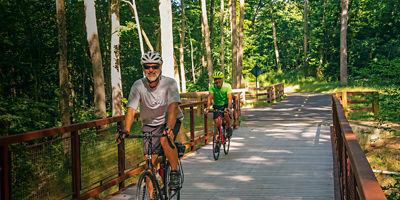
For many committed cyclists across the country, perfect riding weather doesn't come 12 months a year anyway. So for those wanting to bike through whatever cold-weather conditions are thrown their way, even when others burrow into a comfortable couch, a few skills and pieces of key gear will make all the difference to improve your winter biking experience.
The Right Gear
Your first need is keeping your winter riding equipment functional—making sure it’s always ready to perform for you.
Keep it Clean
Riding in the winter is messy, and slurry from the road is often full of corrosive salt. Make sure you thoroughly clean your bike after every ride. Pay special attention to your drivetrain and brakes.
Fenders
Protective fenders will not only prevent the tires from throwing dirt and muck into your bib while you ride, they can also protect your bike components. There are capable fender options for even the raciest of bikes.
Tire Pressure
Cold weather will lower your tire pressure, so check your tires regularly. For added traction, consider running your tires a few PSI lower for a bit more grip.
Lights
It is crucial that you have bright and functioning front and rear lights in the shorter days and reduced visibility of winter. Look for waterproof lights and test various themes outside before your first ride to see how they impact battery life.
Stay Hydrated
Consider purchasing an insulated cycling bottle to keep your water from freezing on long rides.
Retire Your Old Tires
Upgrade your ride by switching to wider, knobbier, grippier tires. Even road bikes can benefit from slightly more grip, while commuters and mountain bikes can add far wider and more aggressive tires.
Consider a Different Bike
For even more confidence, stability and grip, consider moving to a fat-tire bike. Fat-tire bikes have extremely wide tires, often 4 inches wide that run at low pressure. These tires can ride on sloppy roads, packed snow trails or even cross-country ski facilities. If you want to ride off-road in the winter, fat-tire biking is the way to go.
The downside of fat-tire bikes is that they are often extremely heavy. The larger tires and heavy-duty frame make them grumble across pavement with heavy steering. They’re better for messy conditions, and a bit boring on smooth pavement.






















